125 Years of Service to Its Members and British Columbia

From the time the United Association of Journeyman Plumbers, Gas Fitters, Steam Fitters and Steam Fitters’ Helpers of the United States and Canada, forerunner of today’s United Association of Journeymen and Apprentices of the Plumbing and Pipefitting Industry of the United States and Canada (U.A.), chartered Plumbers and Gasfitters Local No. 170 for Vancouver on November 18, 1898, the local’s existence has been characterized by struggle – and perseverance. While throughout its 125-year history Local 170 has had to wage a constant battle against non-union, anti-labour forces, it was from that fight that the local was able to grow and progress on a multitude of levels, such as fair wages, safety and improved conditions on jobsites, retirement pensions, medical coverage and training.
Before 17 inaugural members received the Local 170 charter, however, the U.A. had organized and installed Plumbers and Gasfitters Local No. 67 in Vancouver in July 1893. A letter by member Richard F. Swalwell in the April 1894 issue of the U.A. Journal, the union’s official publication, gave some insight into the local’s situation and conditions surrounding it, stating in part:
“The first week in January witnessed the initiation of the only plumber in our city who had hitherto held aloof. We have inaugurated a system whereby the number of jobbers in a shop are regulated by the number of journeymen employed, and also fixed the rate of wages for men and jobbers.
Local No. 170
U.A.






“The trouble in this province is that there are so many small shops and so many without the semblance of a shop who pose as master plumbers and compete not only on work that they can handle, but on work that they cannot possibly handle, yet dog-inthe-manger like they keep the prices down and it is safe to say that today there is not one plumber in British Columbia making a legitimate profit on his work.
“Considering the general depression in trade Vancouver has done fairly by its plumbers. They have been kept fairly well employed up to the present. The new year though I am afraid will allow not a few to take a rather prolonged holiday.
“In Vancouver we have a plumbing bylaw, a plumbing inspector, a board of examiners who examines all journeymen as to theoretical and practical proficiency in the craft, and who issue certificates to those who obtain not less than 75 percent of correct answers.”
U.A. Organized Over 130 Years Ago

With a general lack of stable, national organizations to represent steamfitters and plumbers at the time, Patrick J. Quinlan, a plumber from Boston, sent a letter to R. A. O’Brien, a plumber in Washington, D.C., on April 25, 1889, proposing the formation of a new, national pipe-trades union. Subsequently, on October 7, 1889, 40 delegates from 23 piping-trades locals in 10 states and the District of Columbia assembled in Washington for a convention.
Four days later, the United Association of Journeyman Plumbers, Gas Fitters, Steam Fitters and Steam Fitters’ Helpers of the United States and Canada (U.A.) was born on October 11, 1889. The U.A. selected Brother Quinlan as its president, Brother Henry Collins of New York City as its vice president and Brother O’Brien as its secretary-treasurer.

But by July 1896, Local 67 had been disbanded, possibly as a result of an economic depression in British Columbia during that time that particularly affected the construction industry.
Getting Its Early Footing
With the economies of British Columbia recovering and Vancouver subsequently growing by 1898, a pipe was laid to bring fresh water to the city from the Capilano River. At first, the water lines simply ran to a tap at the street in front of houses, but plumbers soon began extending the lines indoors and installing sinks and proper bathtubs. Within just a few years,
Meanwhile, most steamfitters were attempting to sustain their own national union, the National Association of Steam, Hot Water and Power Piping Fitters and Helpers, that they had formed in 1888, soon after which it would become the International Association (I.A.). For two decades, however, the two piping unions clashed regularly over jurisdiction – before the American Federation of Labor (A.F.L.) ordered the I.A. to amalgamate into the U.A. in 1912. The union endured through two world wars and the Great Depression, after which on January 1, 1947, it changed its name to the United Association of Journeymen and Apprentices of the Plumbing and Pipe Fitting Industry of the United States and Canada.
the city began installing a sewer system.
The fledgling Local 170 jumped right into the fray after being established on November 18 of that year (after which its classifications would be changed from “Plumbers and Gasfitters” to “Plumbers and Steamfitters” in 1904 and then to “Plumbers and Pipefitters” in 1956). For instance, just two weeks later on December 6, 1898, Local 170 Secretary
U.A. LOCAL 170 125th Anniversary 125
United Association reissued Local No. 170 charter, dated to the local’s original charter date of November 18, 1898, and signed by U.A. General President Martin P. Durkin, who served in that position from 1943 into 1953, and General Secretary-Treasurer Edward J. Hillock, who served in that position from 1943 into 1958.
Patrick J. Quinlan
Richard A. O’Brien








Alfred Shead wrote a letter to the Vancouver’s mayor and city council on behalf of the local pointing out that “the plumbing being done at present is a menace to public health” and that “there are plumbers working in the city who have not been examined or have not got even a permit from the inspector.” He further implored the city officials to “enforce the (plumbing) bylaws” and requested that a journey-level plumber be assigned to the board of plumbing examiners.
After echoing those concerns in a February 25, 1899, letter, Brother Shead sent a third correspondence to the mayor and city council on March 10, 1899. That letter was accompanied by a piping joint that a Local 170 member had removed from questionable existing work that Brother Shead declared was “in the interest of the city.”
Three years later in March 1902, the local gained a new wage scale from its employing contractors for 45 cents per hour for an eight-

The plumbers are in the association, along with the rest of them, and it is on the plumbers that the blow has fallen. The card system has done more for organized labour than anything else that has ever been tried in this city. If we are going to retain the card system, we will have to meet this employers association and fight it out with them.”
Then in August, the local began a six-weeklong walkout against the Barr & Anderson and Hodgson & Stearman shops after the “improvers” (or jobbers/helpers/apprentices) refused to join the union at the request of their employers. Announcing in the November/ December 1902 issue of the Journal that Local 170 has “all the plumbers and fitters in town now that there is work for, new Secretary Charles E. Keefer turned his focus to the strike and proclaimed, “There is a day of reckoning coming, and the good and true brothers of 170 are in the field to win.”
have a strong union, whose members have been in great demand for some time on the coast by contractors and others.”
What’s more, by that time, the local had gained conditions and agreements from contractors that provided its members with overtime pay at the rate of time-and-one-half for work done until 10 p.m. and double-time after 10 p.m.; with Sunday and Dominionholiday work also at a double-time. They also required that only one “master plumber” (or contractor) was allowed to work on a building at “one and the same time,” he must carry a working card issued by the local; and he must employ one journey-level plumber before he is entitled to the card.
Growing A Local & City
hour day – or $3.60 per day.
But in response to growing unionism throughout British Columbia, particularly among the construction trades, employers formed the Employers Association of Vancouver with the aim of creating open-shop companies that could employ both union and non-union workers. By 1904, the association had 103 member-businesses and had stepped up the conflict with unions, which led to numerous strikes during the decade.
One of those actions began on June 22, 1902, when Local 170 went on strike against the Barr & Anderson plumbing shop after the contractor announced it would no longer recognize the union-card system of the Vancouver Building Trades Council, in effect becoming a nonunion “open” shop. Brother Shead summarily declared in the June 27 issue of The Independent newspaper of Vancouver, “The employers of this city have formed a secret association, the main object of which is to smash the card system.
Before year’s end, Local 170 had undeniably made its mark, as an article in the September 5, 1903, Independent reported, “The plumbers
Throughout the first two decades of the 20th Century, Vancouver was rapidly growing with the construction of new buildings that employed union plumbers, gasfitters and steamfitters, as well as craftsmen

U.A. LOCAL 170 125th Anniversary 125 U.A. LOCAL 170 125th Anniversary 125
The Birks Building under construction in downtown Vancouver in 1912. (City of Vancouver Archives photo.)
The Local 170- crew working on construction of the Canadian Pacific Railway depot in Vancouver in 1914.


from all the other building trades. Among those projects, the Post Office at Main and 15th streets was built between 1905 and 1906; the 13-storey Dominion Trust Building on West Hastings Street, briefly the tallest building in the British Empire, was completed in 1910; and the 10-storey Birks Building at Georgia and Granville streets was ready when Montrealbased Birks Jewelry moved its Vancouver store into the downtown location on November 8, 1913. During that period, several other major structures went up in and around Vancouver, as well, such as the CPR pier, the Carnegie Library at Main and Hastings streets and the Hotel Europe flat-iron building in Gastown, the city’s oldest neighbourhood.
Meanwhile, U.A. General Organizer John M.


Local 170 Charter Members
These 17 men signed the U.A. Local 170 charter issued on November 18, 1898.
W. D. Archibald
F. Herbert Burkholder
Allister F. Green
J. Hunt
D. A. McDonald
F. J. McIntyre
H. McLuorrie
J. McLugan
J. McMurphy
Peter Moran
Andrew Patton
Charles Paul
Alfred Shead
M. A. Thompson
William H. Walpole
Caleb Weeks
Bert Weeks
Love reported in the March 1910 Journal after he had visited Vancouver that “All shops are wellorganized.” Then, in the following month’s issue, he was also able to announce that, following a half-day strike, the contractors had agreed to a wage increase for Local 170 journeypersons from $4 to $5 for an eight-hour day.
The following year, however, after the Master Builders Association of Vancouver declared that Vancouver would be an “open-shop town,” all trades of the Vancouver Building Trades Council, with which Local 170 was affiliated, went out on strike on June 5, 1911. Having been in the city during and after the build-up to the strike, U.A. General Organizer John W. Bruce reported in the July 1911 Journal, “Our interest in this fight is intense, because it will only be through the union job that our trade could be possibly brought to time in this city. During the progress of this strike, Local No. 170 has made many advances and today our ranks are closer than at any stage of its history. … Local No. 170 has gone into this fight to win and are determined to stay with the game to the end.”
But by July 16, many of the trades were unable to sustain the strike, after which the building trades called it off and sought to gain the best terms they could in new agreements – except for the plumbers and fitters. To the contrary, Local 170 continued to strike, leaving Organizer Bruce to announce in the August 1911 Journal, “Local 170 … remained loyal to the end and were determined to keep on, but with the turn of events we decided to still stick until we got our own conditions, and stick they will.”
Without the support of the building trades and with an influx of plumbers and fitters coming into Vancouver at the beckoning of the larger, open-shop contractors, Local 170 initially agreed to allow its members to return to work for “fair” contractors who supported the union and closed-shop conditions. As the situation persisted, however, on August 1





the local called off the strike and “allowed its members to seek work in any shop in the city.”
After the dust settled, by 1913 Local 170 had 75 members, and the January 24, 1913, British Columbia Federationist newspaper of Vancouver reported that the local was “going along nicely” and that “good headway is being made with organization work, a few members being initiated every month.” During a membership meeting on October 8 of that year, members voted in favour of double-time for all overtime and also agreed that sprinklerfitters should be admitted into the local.
Shortly after the start of World War I in 1914, there was a serious decline in work in Vancouver as the result of a lengthy strike/ lockout. The situation became so stifling at one point that Local 170 had to lay off its Business Manager due to a lack of funds, while the local
also abandoned its offices for a period and instead rented space for their regular meetings at the Vancouver Labour Temple.
In 1916, the local accepted an offer from the contractors of a wage scale of $4 for 8 hours of work per day, and the strike/lockout ended.
Beginning that year, the ship-building industry in Vancouver was becoming a major employer for Local 170. As such, in April 1917 wages for the local’s shipbuilding plumbers and marine pipefitters were set at 56-1/4 cents per hour for a 44-hour week, which included a half-day on Saturdays), and all overtime was to be paid at double time.
Then on June 22 of that year, Local 170 advised its employing contractors that wages for its member plumbers and gasfitters were to increase to 62-1/2 cents an hour.
U.A. LOCAL 170 125th Anniversary 125 U.A. LOCAL 170 125th Anniversary 125
The Local 170 teams that won the Shelly Challenge Cup relay race and the General McRae Challenge Cup tugof-war contest in Vancouver in 1922 consisted of members (left to right) R. Taylor, W. Strachan; C. Keefer, E. T. Mitchell, A. Jane, H. G. Fulton, A. E. Hansen, S. G. Smylie, S. Bromely, J. Hey, G. Lyle, R. Somerville and C. McCurig.


After the war ended on November 11, 1918, by the following year union membership in British Columbia climbed to 40,000, up from 11,000 during the war years – but 10,000 union members in Vancouver were still unemployed. War industries such as shipbuilding had shut down, and the world entered a post-war depression just as thousands of soldiers returned from the battlefield and into the workforce.
Regardless, in early September 1919 Local 170 gained a new wage scale of $7.20 per day for its journeypersons and $5 per day for its apprentices working in shops throughout its jurisdiction. Soon after, the local was also able to secure the same rate for its members working in the Wm. Lyall Shipbuilding and Northern Construction shipyards.


Historic Highs & Lows
By 1922, Canada and British Columbia were on the road to economic recuperation once again. But before a full recovery was made, Local 170 granted a committee of the Master Plumbers Association, which consisted of the plumbing-shop owners,

admittance to a membership meeting on April 8, 1921, to speak about the general conditions of the industry. Following the presentation, the local’s members agreed to extend their current agreement with its existing scale of wages, while also supporting a request by contractors that members would be urged to voluntarily accept a 10-percent reduction in wages from May 1 to June 30 of that year.
At various times during the earliest years of the 1920s, the local had to cut back its business agent to half-time hours because of its restrictive budget; on top of that, there was a constant need to revise membership dues because the local was operating at a deficit. Then in 1921, the local combined its offices of business agent and financial secretary, after which the membership voted Brother Fred Welsh to the position.
As the prosperity that would ultimately define the 1920s took hold and Local 170 likewise began to thrive, in 1926 the local pushed hard for a new wage rate of $9 per day for an 8-hour day. With the employers offering $8.40, in the end the local agreed to $8.50 per day during a five-day week.
(“The five-day week, which has been in existence for three years, has proved very satisfactory and will be continued,” Local 170 Business Agent W. Watt would later state in a June 29, 1929, Vancouver Sun article.)
After two months of negotiations, on June 28, 1929, the local and its employers reached agreement on a new, two-year contract that called for a new wage scale of $9.50 per day for the first six months from July 1 to December 31 and then a raise to $10 per day. Among its other provisions, the pact set a quota of one apprentice to five journeypersons employed on a jobsite, and it also contained stipulations to put into effect plans to give apprentices in the trade “proper training, including technical education in sanitation and heating.”


A number of large projects in Vancouver were employing Local 170 members at that time, as well, such as the 11-storey Stock Exchange Building on Howe that was completed in 1929 and the $2.3-million Marine Building on Burrard Street, which at 97.8 meters was the city’s tallest skyscraper when it opened in 1930. Work on the 17-storey Hotel Vancouver on West Georgia Street was also underway with union plumbers and fitters beginning in December 1928 – although it would not be completed until May 28, 1939, when it became the tallest building in Vancouver until the completion of TD Tower in 1972.


The onset of the Great Depression, the historic, worldwide economic and human catastrophe that began when the United States stock market crashed on October 29, 1929, (history’s “Black Tuesday”) and lingered into the late 1930s, did not spare Vancouver, to which many men traveled from the prairies and the interior of British Columbia looking for work that did not exist. Overall, the financial collapse brought hard times to U.A. members across North America as unemployment among its ranks soared. “Construction all but stopped, and this led to a significant decline in manufacturing,” the U.A. International history recounts. “The economies of both (Canada and the United States) spiraled ever downward, until unemployment reached extremely high numbers and workers began to give up altogether.”
The Journal ran several issues during the early 1930s that offered advice on how members could make their wages stretch as far as possible, but much of the focus of its articles was either on calling on the government to take action to help people or on trying to offer some hope and encouragement to the U.A. membership. Meanwhile, as its overall international membership declined and the U.A. held no conventions between 1928 and 1938, “the union held it together,” the U.A. history declares.
Local 170 Union Halls And Meeting Locations
(Local 170’s fixed location prior to 1905, if it had one, is unrecorded in records and directories.)
S.O.E. Hall
542 Granville Street
1905 – 1906
Ingleside Building
313 Cambie Street
1906 – 1910
Trades and Labor Hall
112 West Cordova Street
1910 – 1911
Labour Temple
411 Dunsmuir Street
1912 – 1920
Meetings in Orange Hall
341 Gore Avenue
1910 – 1920
Labour Hall
Riggs-Selman Building
319 West Pender Street
1920 – 1923
Holden Building
16 East Hastings Street
(Meetings in Labour Hall)
1923 – 1928
Labour Temple
529 Beatty Street
1929 – 1948
Labour Temple
307 West Broadway 1948 – 1972
Local 170 Union Hall
5170 Victoria Drive
Vancouver 1972 – 1978
Local 170 Union Hall
3876 Norland Avenue
Burnaby
1978 – May 2008
Local 170 Union Hall
1658 Foster’s Way
Annacis Island, Delta May 2008 – current
By 1931, the finances of Local 170 were in such a precarious state that the local laid off its business agent, reduced its financial secretary’s pay to $25 per month, cut back on its office space and canceled its office phone – which the local would do without until 1940. At the same time, the local’s employers demanded a wage reduction while the local was facing the issue of collecting dues from members who had not worked in a year or more.
Indeed, the Great Depression ravaged the membership of all unions, including Local 170. Although building continued in Vancouver during the 1930s, it was on a smaller scale and many projects did not require the use of
U.A. LOCAL 170 125th Anniversary 125 U.A. LOCAL 170 125th Anniversary 125
Local 170 member
A
corks pipe at Vancouver Engineering Works in 1926.


many plumbers and fitters, if any at all. The construction downtown was primarily midsized office buildings, the Vancouver Art Gallery was completed in 1931, the University of British Columbia’s main library was completed in 1935, a new Vancouver City Hall opened in 1936, the Orpheum Theatre opened in 1937 and the Hotel Vancouver was rushed to completion in time for a visit from King George VI in 1939.
By the end of the decade, unemployment had decreased significantly. The beginning of a second – and more devastating – global conflict the following decade would bring an outright end to the Great Depression.



Pitching In For A War
As late as January 1940, membership in Local 170 stood at 156, but 23 of those members had not paid their dues by that time – possibly as a consequence of the Depression years.
The demand for war materiel after the outbreak of World War II in Europe in September 1939 ultimately produced a glut of employment in the Greater Vancouver region, and especially in the shipyards. By 1943, in fact, the ship-building companies in and around the city were employing an estimated 25,000 workers of all trades, including union plumbers and fitters, to build Victory Ships for duty. Other major projects during the war years included the large pulp and paper mills at Ocean Falls, Powell River and Woodfibre; a new airport and support buildings on Sea Island; and smaller projects throughout the Lower Mainland.
Local 170 remained active outside of the workplace, as well. In June 1942, for instance, the local agreed to support a separate local for refrigeration mechanics in the city, and it responded to a call from plumbers on the north coast for assistance in forming a separate local to handle work in their region. The following year, the local attempted to negotiate for a six-hour workday with a journeypersons wage rate of $9 per day, but in the end, it settled for a straight increase in its hourly pay.
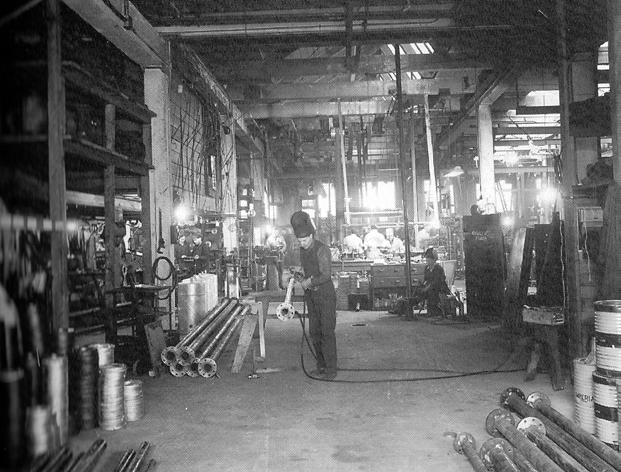




With the influx of work in its jurisdiction, Local 170 grew exponentially to more than 1,200 members by the end of the war in September 1945, not including apprentices. But as the military industries wound down, union membership began to decrease, and nonmilitary work was slow in taking up the slack.
Nevertheless, in 1946 the Regional War Labour Board, set up to regulate union

U.A. LOCAL 170 125th Anniversary 125 U.A. LOCAL 170 125th Anniversary 125
Local 170 members prepare sprinkler-system stock at the Walsh Construction shop on Granville Island in Vancouver in 1937.
Local 170 members work in the Leek & Company piping shop in 1943 during World War II.
Local 170 member Glen R. Archibald blazes pipe at the Burrard Dry Dock shipbuilding company in North Vancouver in 1944. (Photo from MONOVA: Museum and Archives of North Vancouver, INV F164, Photographer Jack Cash.)





negotiations during wartime, granted Local 170 a journeypersons wage rate of $1.35 per hour.
The fast-paced style of ship building required during the war and the general growth of the industry had caused Local 170 members to be concerned about the quality of the materials used in their profession. In 1940, the local first raised concern about the need to use materials carrying the union label, and eight years later during a meeting in May 1948, the local passed a motion that it would no longer install any material that was made by non-union labour.
EXTENDING ITS REACH
With Vancouver expanding during the post-war years, so too did the vast employment opportunities for Local 170 members into and throughout the 1950s. As such, at just about every one of its meetings



Two major sectors that provided much of Local 170’s work during that time were the conversion of the sleepy west end of downtown Vancouver into a high-density high-rise area and the rapid development of infrastructure for resource industries including pulp mills, gas plants and pipelines. Members also gained manhours through numerous public works projects, including the 91-meter-high concrete Cleveland Dam from 1951 to 1954; a new post office on Georgia Street; the new Central Library at Burrard and Robson streets; and Empire Stadium on the PNE (Pacific National Exhibition) Grounds, built in 1953 for the British Empire Games.

during the decade, the local’s Executive Board processed applications for membership.
Tragically, however, Local 170 Business Manager Frank Carlisle, Vice-President Robert Watson and another member with the surname McHugh died in a light plane crash in 1952 while they were traveling to Kitimat, British Columbia. The local paid one month’s wages to the wives of the dead officers, and it resolved that, in the future, union officers would fly on commercial airlines or be adequately insured when flying in light aircraft.
Out of a necessity created by the influx of jobs, in 1953 Local 170 also appointed Brother Archie Matheson as its first fulltime dispatcher to assign members to jobsites when the local was called upon to supply manpower. Until then, the Business Manager had handled dispatch duties along with his other responsibilities.
Many Local 170 members and U.A. brothers from other locals across North America were also employed throughout the mid-1950s constructing the numerous pipeline spreads on the Westcoast Transmission Pipeline in the province. When completed in 1957, the 650-mile natural gas pipeline that took natural gas from the Western Canadian Sedimentary Basin south to the province’s Lower Mainland was Canada’s first “biginch” (large-diameter) pipeline.
What’s more, downtown commercial towers built during that period included the 21-storey B.C. Hydro Building and the 19-storey Burrard Building from 1955 to 1957, as well as many smaller office and industrial structures throughout the city. Other key projects that employed scores of the local’s craftsmen in that period included the wood-pulp Harmac Mill on Vancouver Island starting in 1955 and the Taylor Flats Gas Plant in 1959.
Additionally, while during the latter years of the 1940s in and around Vancouver thousands of modest homes, mainly in the western and southern reaches of the city, were constructed, after 1950 it became apparent that single-family dwellings alone would not
Local 170 Primary Trade Classifications
(As assigned by the United Association)
Plumbers & Gasfitters
November 1898 – February 1904
Plumbers & Steamfitters
February 1904 – 1956
Plumbers & Pipefitters
1956 - current
meet the need. Subsequently, public housing on a major scale was developed throughout the decade, beginning with the Little Mountain Housing Project in 1953.
But the largest project to employ Local 170 members during the 1950s was the Kemano Project at Kitimat, which involved construction of a dam on the Nechako River and a large tunnel to bring water to feed a hydro-electric plant for the Alcan Aluminum Smelter. The massive project employed thousands of construction workers, including Local 170 members, beginning in 1950 and into the 1960s.
Local 170 faced its share of adversity as well, perhaps most notably when it declared a strike in 1958 against all employers who had not signed a new memorandum of understanding pertaining to wages and working conditions. The strike was resolved and ended September 9 after many of the local’s members spent five months on picket lines and the Master Contractors Association agreed to a 20-cent hourly wage hike for the local’s journeypersons to $2.90 per hour and 6 cents per hour as a fringe benefit (possibly for vacations), allowing work on large projects such as the $6-million Vancouver Civic Auditorium and tens-of-millions-of-dollars’ worth of school construction to resume.
U.A. LOCAL 170 125th Anniversary 125 U.A. LOCAL 170 125th Anniversary 125
The Local 170 crew, including members Marcel J. Mailloux (front row, far left) and Lee Maillou (front row, third from left), working for Barr & Anderson Plumbing and Heating Contractors on construction of the Kelly, Douglas & Co. Building on Kingsway in Burnaby, circa 1946.




Local 170 members and their families and friends gather for a group photo during the local’s annual picnic on Bowen Island on August 2, 1948.





Gaining Key Benefits
Major projects that employed Local 170 members during the 1960s included the Port Alberni Pulp Mill in 1963; plants for the Elk Falls, Crofton and Hooker chemical companies that same year; the Prince Rupert Pulp Mill and Pacific Coast Hydrocarbons plant in Squamish, Northwood Pulp and Intercontinental Pulp mills in 1965; and a number of mines throughout British Columbia. Local 170 crews were continuing expansion work at Harmac Mill and Powell River Paper Mill, as well.
The local also slightly grew in size when the U.A. merged the smaller Plumbers Local No. 423 of Vernon, Kelowna and Penticton, British Columbia into it on November 1, 1962.
Perhaps the highlight for the local during the decade, however, was gaining two crucial fringe benefits for members in its collective bargaining agreement with contractors: its Health and
Welfare Plan and its Pension Plan. The new healthcare insurance was established in the fall of 1966 with a contribution from employers of 7 cents for each hour worked by a Local 170, while the new retirement benefit was instituted in the local’s April 1964 contract and went into effect on October 1, 1966, with an additional 7-cent-per-hour contactor payment.
But in 1966, Brother J. Russell St. Eloi submitted his resignation as Business Manager, having taken on the job as U.A. organizer for Western Canada. He was replaced by Assistant Business Manager Bill Weir until an election could be held.
As the eventful decade continued, the U.A. merged Plumbers and Steamfitters Local No. 238 of Prince George, British Columbia, into Local 170 on November 3, 1966, ending several decades of concern by Local 238 members in the north regarding the service they were receiving from the local. Under terms of the merger agreement, a business agent working out of the
Members Gained Retirement Pension Fringe Benefit in 1964
Local 170 members had been discussing gaining retirement benefits long before the local and its employing contractors signed a collective-bargaining working agreement in April 1964 that provided for a contribution of 7 cents per hour beginning October 1, 1966, into a new Pension Plan Fund. With the fund, the local’s members were initially given retirement benefits of $2.85 per month for each year of past service to the local for a maximum of 15 years.
Early on, members were required to have 10 years of credited past service and five years current service in order to qualify for a pension at age 65. A full 15 years was required for early retirement, and vesting or “locking in” was not granted until age 55 with 15 years of service.
Over the years, the Pension Plan Board of Trustees has granted increases or made improvements to the Pension Plan with each contribution rate increase. For instance, with a number of increases, by 1999 retirement-benefit payouts
had appreciated to $11.41 for each year of a member’s past service.
What’s more, while in 1966 a member received $3 accrued benefits for each plan year that he or she worked a minimum of 1,500 hours, by 1999 members received $91.20 for each plan year he or she worked 1,600 hours. And while in 1966 a member was deemed to be vested after 15 years of credited service, by 1999 a member was deemed vested into the pension plan after two years of working at least 300 hours each year.
As of September 30, 2020, 1,840 pensions were being paid out to Local 170 members or their beneficiaries at an average cost of $1.78 million per month. By that time, further improvements made it possible for members to retire at age 60 with the Old Age Security Option (bridging); retire early at age 62 with at least 15-years of credited service; or retire between the ages of 66 and 71 with a “delayed pension.”
U.A. LOCAL 170 125th Anniversary 125 U.A. LOCAL 170 125th Anniversary 125


Vancouver office would serve a northern area from 100 Mile House to Fort St. John, east to McBride and west to Kitimat. The two locals also agreed that northern members would have first choice on commercial work in their area, but they would receive equal consideration with other members for industrial work anywhere in the province.
Then in 1968, Local 170 formally moved to establish its Metal Trades Division, which would include warehousemen, truck drivers, labourers, office employees, countermen, lightoil burner mechanics and members working in


gas distribution and for the Terra Irrigation and Pacific Irrigation companies. The membership voted to approve the proposal, which was signed on November 17, 1969.
Over the next four years with newly elected Local 170 Business Manager Les Andrew, a number of meetings were held to give more autonomy to the new division, which included electing its own Business Manager and having its own Executive Board and Finance Committee. Subsequently, members voted Brother Norm Farley as the first Business Manager of the local’s Metal Trades Division.
Members Gained Healthcare Insurance Fringe Benefit in 1966
Since its inception, Local 170 has always concerned itself with the individual health and welfare of its members – even before a healthcare benefits plan was in place. For instance, when a member became ill in 1924, the local’s membership instructed its business agent to work with the member’s wife to secure medical assistance. Even though the member passed away, the membership then gave the local’s Executive Board the approval to provide financial assistance to his family.
During its earliest years Local 170 also formed a Sick Committee to provide financial assistance from the local’s funds to ailing members who could not work. For example, shortly after World War I, the committee paid two weeks of sick benefits to one member, and one week to another.
In 1944, the local made paying into a Sick Benefit Fund compulsory for all journeyperson members and optional for helpers and apprentices. The initial monthly assessment was 25 cents, and the benefit was $5 per week for a maximum of 13 weeks.
The local also had a Death Benefit Fund that was supported by periodic assessments on all members and paid $300 to the beneficiary after a member in good standing with the union passed away. The local increased the benefit to $400 in 1949 and $750 by 1954.
In the fall of 1966, the local and its contractors established the local’s Health and Welfare Plan in their collectively bargained working agreement to provide healthcare insurance to Local 170 members and their families. Initially, contractors made a contribution of
7 cents per hour worked by a member into the local’s Health and Welfare Fund.
The initial plan included all building trades members and those working on pipelines and employed at Burrard Dry Dock. Six months later, members of Allied Ship Builders and BC Marine Ship Builders also joined the plan, which also covered apprentices while they were attending monthly day school.
The plan in its initial years provided members with $5,000 in life insurance; a weekly indemnity of $40; basic medical coverage including maternity and surgical services; physiotherapy and special nursing; dental coverage of up to $100; psychiatry up to $345 per year; and chiropractic services up to $50 a year.
By 1972, the plan entered into reciprocal agreements with the health and welfare plans of 15 other U.A. locals. At that time, there were more than 1,500 U.A. members working through Local 170 as travelers to the local’s jurisdiction, creating a one-sided situation where administrative costs were falling heavily on the Local 170 plan.
In 1973, the life insurance rose to $4,000 and the weekly indemnity was $96 a week. Dental plan coverage was changed to full coverage for basic dental services and 50 percent on major services.
The Local 170 Health and Welfare Plan has been constantly enhanced over the years to accommodate the local’s membership. As such, for the plan year ending September 30, 2020, the average monthly covered members were 2,066, an increase from 1,880 over the previous year.


Mergers & More Money
Local 170 began the new 1970s decade in negotiations with the Construction Labour Relations Association, a bloc of contractors in and around Vancouver, that had started in November 1969. After the two sides failed to reach an agreement, the 3,000-member local voted on August 9, 1970, by a 90-percent to 10-percent margin against accepting a twoyear proposal that would increase their package contract rate from $5.96 to $7.01 per hour and was recommended by Deputy Labour Minister William Sands.


During the ongoing negotiations, unemployed members of Local 170 picketed shops while their employed members continued to work – which one newspaper dubbed “striking without being on strike.”
Brother St. Eloi, now organizer for Western Canada, intervened in the dispute by order of U.A. International President Peter T. Schoemann after the local’s members rejected Deputy Labour Minister Sands’ proposed settlement and Labour Minister Leslie Peterson threatened the plumbers with compulsory arbitration. But according to an article in the November 4, 1970, Vancouver Sun newspaper, Local 170 officers protested the intervention and called for “total rejection” of a St. Eloi-proffered contract. At a membership meeting on October 28, the newspaper reported, Organizer St. Eloi “retorted by claiming the local officers handled the negotiations ‘like a pack of bungling idiots’ and called on the members to elect new leaders.”
industry’s offer of an 18.5-percent wage increase over two years – making them the highest-paid building tradesmen in the province. The twoyear contract with the Construction Labour Relations Association provided a total pay increase of $1.10 per hour that took the local’s total journeyperson rate to $7.06 per hour in wages and benefits on October 1, 1971, until the contract expired on April 1, 1972.

In addition to 10-percent vacation pay and 41 cents in healthcare and pension benefits, the journeyperson’s base pay was moved initially to $5.95 per hour on May 15, 1970; then to $6.20 per hour effective October 1; $6.40 per hour on April 1, 1970; and $6.65 as of October 1, 1971.
Against their officers’ recommendation, 60 percent of the local’s members voted on November 3 to accept the construction
As Local 170 continued to grow, in 1970 its Executive Board recommended that the number of paid officers of the local be increased to the Business Manager and five business agents, including one for the new Metal Trades Division. The local remained a combination local with two separate divisions, which was
U.A. LOCAL 170 125th Anniversary 125 U.A. LOCAL 170 125th Anniversary 125
A Local 170 member works as rigger on a job to lay a natural gas pipeline across the Fraser River near the Queensborough neighborhood in Vancouver in 1956.







approved by U.A. General President Martin J. Ward on November 27, 1973.
Part of that growth included a small influx of sprinklerfitters who transferred into the local after U.A. Canadian Sprinklerfitters Local No. 379 was disbanded on March 1, 1971. Afterward and through to the local’s 125th anniversary in 2023, Local 170 has had the primary building-trades classifications of plumbers, pipefitters, welders and sprinklerfitters.
But in 1972, the Construction Labour Relations Association locked out the entire building-trades industry, after which the Minister of Labour gave the parties seven days to end the dispute or face binding arbitration under the new Mediation Commission Act.
After a three-month shutdown of the industry, a settlement was reached – although the bargaining council of the trade unions and the contractors’ association continued to lock horns for the next 25 years.




Added to the challenges Local 170 faced during the decade, the federal government put in place the Anti-Inflation Board to regulate wages and prices. The board rolled back wages settled in two consecutive collective-bargaining agreements between the local and contractors in the 1970s, one by 12 cents per hour in 1976 and another by 15 cents per hour the following year.
During this period, the building trades developed the Jurisdictional Assignment Plan to resolve jurisdictional disputes without disrupting work. Meanwhile, the bargaining council system set up under the Building and Construction Trades Council was producing significant two-year agreements, with gains in wages and such items as extensions to the non-affiliation clause, whereby union members covered by an agreement are not required to work with anyone who is not a member of the union, which was a major condition for Local 170.
Those settlements, along with a construction boom in the province, produced a period of high

U.A. LOCAL 170 125th Anniversary 125 U.A. LOCAL 170 125th Anniversary 125
A crew including Local 170 member Glen R. Archibald (fourth from left) fabricates piping in the copper shop of the Burrard Dry Dock shipbuilding company in North Vancouver in April 1957. (Photo from MONOVA: Museum and Archives of North Vancouver, INV 27-178.)
Local 170 members work on the Bridge River Pipeline in 1959.
Local 170 member Teddy Atherton (right) is congratulated by U.A. General Organizer Clifford Priestley in 1960 for his more-than 50 years of membership in the union, the longest U.A. service record in the U.A. at the time, while he had also served as the locals treasurer over the previous 20 years.
Local 170 members prepare to begin a job at the McLeod Lake Compressor Station in April 1968.





Local 170 apprentices and journeypersons, with piping-industry officials and instructors (left to right, kneeling) A. W. Clement, G. Eamor, P. Hutchinson and W. Grafton, all of Local 170; instructors P. Kovasch and J. Perrault; (middle row) P. Meredith, Joint Apprenticeship Committee (J.A.C.) Trustee A. M. Jones, A. Van de Pas, R. Rubuliak, Chief Instructor B. Wells, A. Esau, D. Napier, J.A.C. Director of Training W. T. Weir, and a photographer from Circle Diving Centre; and (back row) G. Fletcher, W. Kinloch, D. Reason, all of Local 170, and M. O’Neill and J. Hill of Circle Diving pose after completing a J.A.C.-sponsored course in scuba diving pipefitting in 1969 that qualified the Local 170 members as scuba divers with special training in underwater piping, preparing them to undertake underwater piping installations.
employment and high earnings for the Local 170 membership, even though runaway inflation in the 1970s undercut those gains and Construction Labour Relations Association did everything in its power to undermine the agreements.
Perhaps as much as anything, the decade was defined for Local 170 by the numerous
Keeping Members Entertained
The Local 170 Social Committee has for decades planned and executed a host of events for the local’s members to enjoy away from jobsites and the union hall. Utilizing a volunteer workforce from the membership, the committee has hosted a variety of functions over the years, including the local’s Annual Picnic, Annual Golf Tournament, Children’s Christmas parties, Annual Senior Service Awards nights that honour long-time members, and Apprenticeship Graduation ceremonies.
Among the many member sports teams the local has sponsored throughout the years, Local 170 and its contractors sponsored a member hockey team that played to raise money for British Columbia Children’s Hospital.
fluctuations in employment of its members. For example, in January 1971, 804 members out of a total of 3,100 were working, but by December of that year, the local had a total of 5,300 members working; but one year later, there were 900 unemployed members in the local.
Another highlight for Local 170 came on May 1, 1979, when the U.A. amalgamated Railroad Local No. 571 with the plumbers and pipefitters local. Soon after, plans were underway to join with other unions at BC Rail, a railway in British Columbia, to bargain jointly to finalize a collective agreement.
Local 170’s spirit of cooperation was on display again later that year when the local agreed to bargain with other U.A. locals in the province under the auspices of the British Columbia Provincial Pipe Trades Council. That year, the local also agreed to join with other mechanical-trade unions to engage in joint negotiations if needed.


U.A. LOCAL 170 125th Anniversary 125




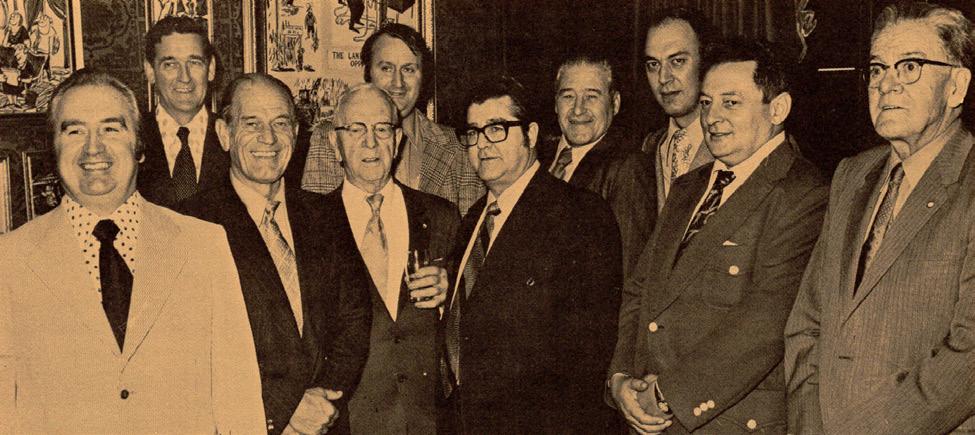
Anti-Union Advances
Local 170 began the 1980s winning approximately $4 million held in escrow by the Construction Labour Relations Association over the disputed rollback of the negotiated 1976 and 1977 contract settlements during the three-year federal anti-inflation controls period under the Anti-Inflation Board. After the association lost an appeal to the Supreme Court of Canada on May 21, 1980, against a Federal Court of Appeal ruling that allowed the local access to the funds, the plumbers “hailed the decision as a victory because the (Anti-Inflation Board) administrator already had ruled in their favor in regard to restoring the rollback,” the May 22 Vancouver Sun reported.
The $4 million was placed into the Pension Fund of the local’s 5,000 union members. A second dispute regarding the Anti-Inflation Board 15-cents-per-hour rollback of the 1977-78 settlement did not involve any escrowed funds.
The 1980s also brought with it the most dramatic shift in the fortunes of British Columbia’s construction trades since the building boom following the Second World War. Those transformations were brought on
as the federal government slowly whittled away at labour’s rights, and particularly those of the building trades.
As a result, much of the Local 170 membership struggled to the point at which in June 1984, the local’s Executive Board recommended an assessment on the local’s building-trades members of 25 cents an hour to develop a food voucher program for members in need. The following year, the local levied a 10-cent-perhour assessment for the voucher program that continued to April 30, 1986.
But labour’s Operation Solidarity was in full swing, and rallies, demonstrations and the threat of a general strike forced the government to somewhat curb its anti-union actions. Regardless, tension between labour, management, government and the rising nonunion sector was high.
Those hostilities remained throughout the much of the 1980s and were further aggravated when a new provincial government led by William Vander Zalm ascended in 1986, leading a large contingent of anti-union candidates to victory, and then introduced Bill 19, which attacked labour and particularly the building trades. The building trades immediately opposed the measure, on one occasion holding


a 1,500-strong rally in the Garden Auditorium of the Pacific National Exhibition in Vancouver on April 13, 1987, that even Local 170 member Brother Ed Govorchin addressed with a strong warning: “We’re going to have to go out and demonstrate. The people in this province are being disenfranchised, and when they get us, they’re going to get everybody else.”


In the face of labour’s massive opposition, with strong leadership from Local 170, the government finally backed off on some of the more onerous provisions of Bill 19, particularly those that would destroy the union hiring-hall system. But the rest of Bill 19, along with the Industrial Relations Council it created, still hurt the building trades. As a result, during the last few years of the 1980s, Bill 19 fostered the growth of the non-union sector in construction and placed serious roadblocks in the path of union organizing drives, making it even more difficult for unions to fight back.
Local 170 did, however, increase the use of the tools it did have at its disposal to protest anti-union activity and promote and protect the union piping trades. For instance, on April 14, 1986, the local set up information picket lines around the Vancouver School Board office and other board buildings to protest a new board policy allowing lower-paid janitors who were members of the International Union of Operating Engineers to perform some work as “repairmen” that traditionally was done by plumbers. Then on June 23 of that year, Local 170 picketed jobsites to protest a new contract that was jointly negotiated by the building trades but contained $4-per-hour wage cuts on residential work, which the local strongly opposed, before the British Columbia Labour Relations Board ordered the union’s members to return to work.
Tragedy struck Local 170 before the end of the decade when Business Manager Norm Farley died while in his office at the local’s
Local 170 U.A. Mergers
United Association locals that have been amalgamated into Local 170.
Local No. 423 of Vernon, Kelowna and Penticton, British Columbia, was merged into Local 170 on November 1, 1962
Local No. 238 of Prince George, British Columbia, was merged into Local 170 on November 3, 1966.
Sprinklerfitters Local No. 379 was disbanded and its members within the Local 170 jurisdiction were transferred into Local 170 on March 01, 1971
Local No. 571 of Vancouver was merged into Local 170 on May 01, 1979
Local No. 180 of Prince Rupert, British Columbia, was consolidated into Local 170 on September 01, 1997
union hall on September 9, 1988. A member of the local for 30 years, an officer for 25 years and Business Manager since 1985, Brother Farley was 54 years old.
The local appointed Brother Bill Holmes as interim Business Manager, soon after which the U.A. international office installed Brother Bill Weir as trustee of the local. The membership elected Brother John Wynne as Business Manager the following year.
Supplementing Unemployment
Local 170 created its Supplemental Unemployment Benefit (SUB) Plan on August 27, 1991, for the exclusive purpose of providing weekly benefits to its members who are collecting employment insurance benefits and have sufficient banked hours. To fund the SUB Plan, participating employers remit benefit contributions or 10 cents per hour earned by a member.
As of 2023, the plan pays a weekly benefit of $120 to members who have sufficient banked dollars in the SUB Plan and are in receipt of Employment Insurance (EI) benefits. For each week received, the member receives a $120 benefit from the SUB Plan, and the member’s SUB account is reduced by $40.
U.A. LOCAL 170 125th Anniversary 125 U.A. LOCAL 170 125th Anniversary 125
Local 170 former and current business agents and officers gathered on November 14, 1972, for a tribute dinner for Russell St. Eloi after he was appointed U.A. Director of Canadian Affairs are (1eft to right) Bill Weir, Don Currie, Harold Cranna, Chris Pritchard (who was president of Local 170 when Brother St. Eloi was initiated into the local), Norm Farley, Brother St. Eloi, Norm Uphill, Ray Callard, current Business Manager Les Andrew and Jim Barton.




Battling Back Fiercely
The U.A. consolidated Plumbers and Pipefitters Local No. 180 of Prince Rupert, British Columbia, into Local 170 on September 1, 1997. The merger would be one of the more peaceful events in which Local 170 was involved during the decade.
Non-union plumbing and piping contractors and “rat” unions that claimed to be organized but did not represent their workers continued to gain ground in British Columbia into the 1990s. Subsequently, they won contracts for major projects around the province and particularly industrial work in the north, such as a West Coast Energy plant at Taylor in the early part of the decade and then a Louisiana Pacific mill in Chetwynd and other projects in the Cariboo.
In the winter of 1993, a “rat” union contractor gained another West Coast Energy project, the Pine River Gas Plant. But Local 170 and

most of the building trades saw the project as significant and subsequently launched a major organizing drive to win certification of the more than 600 craftspeople working on the job. However, the “rat” unions organized on a wallto-wall basis, representing all trades, and in the end the building trades were not successful in the certification vote.
But an even bigger battle was ignited when forestry-products giant MacMillan Bloedel, which for generations had contracted with union building-trades contractors for its construction work, let a drywall contract on the $205-million expansion project for its NexGen specialty mill in Port Alberni to a non-union firm. After Vancouver Island Building Trades affiliates walked off the job, MacMillan Bloedel rescinded the contract from the original union contractor, who had submitted the low bid, and gave it to a “rat” union contractor.
The building trades, with substantial leadership from Local 170, responded with a

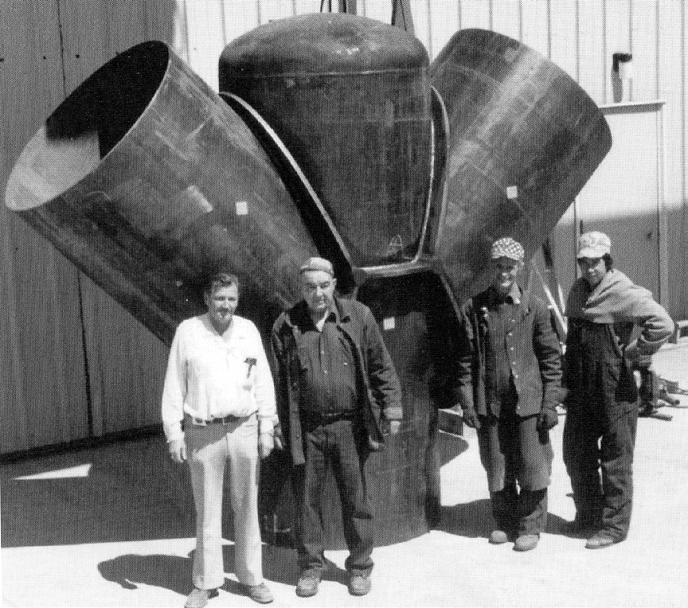




large number of members picketing and protesting the loss of that work. Through the final months of 1994 and into 1995, Local 170 and other building trades continued to picket and demonstrate, calling attention to the injustice of the situation. While many members were arrested, when the dispute strike ended in March 1995 the building trades prevailed and secured an agreement with MacMillan Bloedel that, while it allowed the “rat” contractor to complete the project, prohibited the company from hiring contractors with a history of crossing picket lines.
Meanwhile, since the mid1980s, there had been a slow but steady move in the construction industry for owners to go with the lowest bids for construction work. As a result, non-union contractors took advantage of weaknesses in the bidding process by cutting their labour costs by bid-shopping; hiring unqualified workers; shortchanging wages, overtime and
benefits; and charging for “extras” that resulted from rigid interpretations of the initial contract.
In an attempt to stop the slide of work to the non-union sector, many building-trades unions began to “enable” jobs – cutting a special labour rate to enable a contractor to under-bid nonunion bids on jobs. But Local 170, along with the I.B.E.W. and some other trades, did not participate in enabling, believing that workers were worth their full rate.

U.A. LOCAL 170 125th Anniversary 125 U.A. LOCAL 170 125th Anniversary 125
Local 170 members (left to right) Wally Bruggencate, Vic Brownjohn, Walter Gotowiec and Joaq Mendonca stand by the special piping piece they fabricated for construction of the Pine River Gas Plant in Chetwynd, circa 1979.
Local 170 member Ron Qually fabricates piping for construction of the Pine River Gas Plant in Chetwynd, circa 1979.
A Local 170 member softball team sometime during the 1980s.
Local 170 delegates attend a building-trades rally protesting anti-labour provincial bills 19 and 20 at the Pacific National Exhibition (PNE) fairgrounds in Vancouver in 1987. (Sean Griffin photo, Tribune Photo Collection-SF.)


Instead, on March 11, 1993, the Local 170 Executive Board passed a resolution to develop a market-recovery program based on some highly successful models in the United States. Under Local 170’s Mechanical Industry Advancement Program (MIAP), working members paid $1 per hour into a fund, and that money would be used to reduce a contractor’s bid costs on a particular project. In the first four years of the program through 1997, more than $46 million was



generated in wages and benefits for Local 170 members, and over the ensuing years MIAP would continue to be instrumental in assisting the local’s contractors in winning jobs and providing work for its members.
Along with the market recovery program, the local also developed an aggressive organizing campaign based on the COMET (Construction Organizing Membership Education Training) program pioneered in the States. An important feature of that organizing became the “salting” strategy, by which Local 170 members – or “salts” – work on non-union jobs and report back to organizers with the purpose of helping to organize those sites and their shops.
The new organizing approach represented a significant departure from past practice in the union on two major fronts. First, the union no longer considered nonunion workers as the enemy; rather, they are viewed as working men and women who are victims exploited by the low-bid system. And second, the union was now urging members to work non-union, taking the needed wages and reporting to an organizer about a company to be organized.
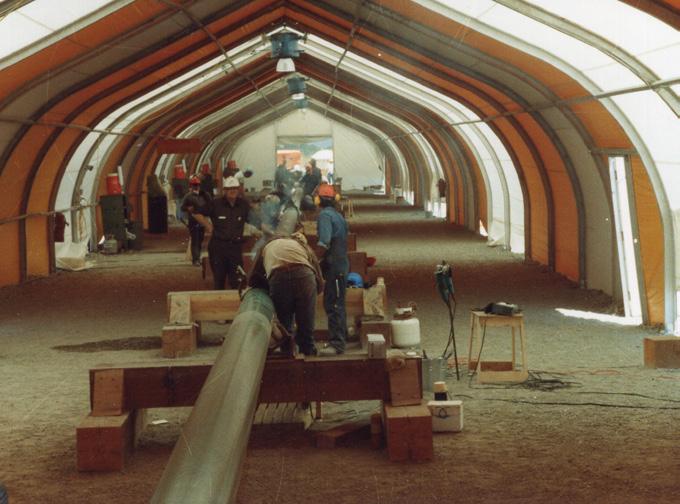




While these two changes in the fundamental philosophy of unionism were hard for some members to accept because they represented such a sharp departure from the past, as the union sector continued to lose work to an increasingly bettertrained non-union workforce and more sophisticated nonunion contractors, it was evident that their union’s very existence was at issue.
Together with the British Columbia Federation of Labour and the Building Trades, during
the 1990s Local 170 also stepped up its lobbying activities and its active support for labour-friendly candidates for elective office. With the return to power of the NDP in 1991, there was a more sympathetic government in Victoria, but it still needed to hear the strong voice of labour if progressive legislation and government policies were to be developed.
Local 170 was a major participant in the lobbying efforts to achieve needed changes to the labour code and, in the late 1990s, action on the “leaky condos” issue that would enforce codes and regulations to ensure quality construction is performed by a qualified workforce. In addition to formal briefs and presentations, the lobbying was aimed at individuals from all parties, public servants at various levels, cabinet ministers and the Premier. The local’s objective was to create a high level of pressure to achieve the changes the union construction and, more specifically, piping industries required to not only survive but to thrive again.

Important, labour-friendly legislation would not have been put in place during that time if Local 170 and other unions had not had the foresight to lobby and push for its implementation. As a result of those efforts, the construction industry had a Labour Code that included amendments that recognized the unique nature of the construction industry, as well as a Fair Wage Act for government-funded projects and increased vigilance under the Employment Standards Act.
U.A. LOCAL 170 125th Anniversary 125 U.A. LOCAL 170 125th Anniversary 125
Local 170 members erect a gas pipeline to Vancouver Island, circa 1990.
Local 170 members work on the Ahlstrom fiberline project at the Weyerhaeuser pulp mill in Kamloops in 1994.





Essentially summarizing the local’s decade as it was preparing to celebrate its 100th Charter Anniversary in November 1998, Business Manager Jim Dougan wrote in a letter that appeared in that year’s May 19 issue of The Vancouver Sun:
“The leaky condo issue is about quality construction. Qualified architects, engineers, contractors and employees build quality buildings when legislation and regulations are enforced. …
“The labour code is in place to protect the rights of working people through collective bargaining. One must ask why workers would want to join a union if their employer was treating them fairly. …
“The labour code changes are about protecting the rights of employees to unionize and secure a collective agreement.”

A New Home & School
As Local 170 moved into its second 100 years and almost simultaneously entered the new 21 st Century and “Y2K” 2000 millennium, its first decade of the 2000s was bookended by arguably some of the more iconic events in which the local’s members ever participated within its territorial jurisdiction. Furthermore, throughout the 10-year period, the local would work to overcome obstacles including a deficit it incurred early on as employment for its members slackened and, subsequently, manhours and dues waned, before picking up dramatically as the decade progressed.
But to begin the 2000s, many of the local’s members joined brothers and sisters of U.A. locals from around North America to build – on an intensely fast-track schedule – the natural-gas Southern Crossing Pipeline running more than 300 kilometers from Yahk in the Kootenay Mountains near the British Columbia/Alberta border to Oliver in


the South Okanagan Mountains. The largest capital project in the history of owner BC Gas (now FortisBC Energy) at about $410 million, the pipeline made 138 water crossings, including three railroad trestle crossings, when it was completed in November 2000 after just six months of construction.
Then in May 2008, Local 170 consolidated and moved all of its Lower Mainland offices, services and operations into its new (and current), modern union hall at 1658 Foster’s Way on Annacis Island, after which it held its first regular union meeting there in June 2008. Also attached to the facility was the local’s larger new, state-of-the-art, 80,000-squarefoot Piping Industry Apprenticeship Board (PIAB) Trade School.
With the centralizing of Local 170’s services in the Lower Mainland into one location along with the upgrading of our PIAB Training Centre,” Business Manager/Financial Secretary Joe Shayler declared in his report to the Local 170 Annual General Meeting on May 31, 2009, “Local 170 now has the infrastructure that will protect our memberships’ interests for decades to come.”
To end the decade, Local 170 members took part in preparing Vancouver and British Columbia to host the XXI Winter Olympic Games and Paralympic Winter Games in early 2010. The involvement of the local’s

plumbers and fitters in readying the city and province for the games, which was fundamental to the success of the projects, included building venues that would host athletic competitions, athletes and visitors, such as the $883.2-million, 11-million-squarefoot expansion of the Vancouver Convention Center and the $178-million Richmond Oval Stadium to host speed-skating competitions.
In between those landmark experiences, from 2001 to 2005, Local 170 experienced a significant improvement in its overall financial position as a result of its continued vigilance in monitoring expenditures and increased manhours worked by members due to the region’s strengthening economy. What’s more, successful organizing of new members and contractors, and the use of MIAP particularly for its commercial contractors, contributed greatly to the rising work being performed by members, which translated into additional funds being paid into the local.
By 2005, the local’s commercial and institutional contractors were exceptionally busy working on several large and small projects throughout the Local 170 jurisdiction, resulting in full employment in the commercial/ institutional sector of the piping industry. In fact, at that time, the local was experiencing employment opportunities and potential that it had not experienced in British Columbia for a very long time – to the point at which its focus
Continued after spread

U.A. LOCAL 170 125th Anniversary 125 U.A. LOCAL 170 125th Anniversary 125
Local 170 members work on the modification and expansion of the Grizzly Valley pipeline in 1995.
The Local 170 crew that during the late 1990s welded together sections of a gas pipeline in Richmond, British Columbia, that was then rolled onto a large drum on a special ship and later laid on the ocean floor to Vancouver Island.







Local 170 Apprenticeship and Training
Educating Western Canada's Premiere Piping Industry Workforce
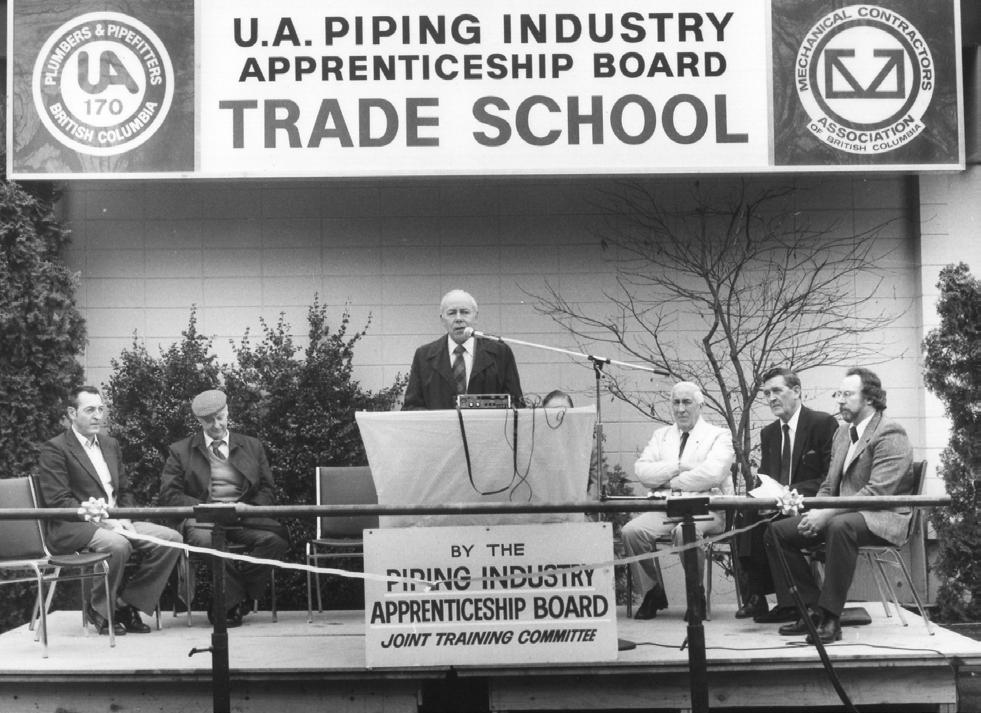
During the dedication and grand opening of the Local 170 Trade School on Rumble Street in Burnaby in 1980, Assistant Deputy Minister of Labour Bob Gray addresses attendees while he is flanked by U.A. and local officials (left to right) Jack Riley, Ken McMillan, Ron Fitgerald, Don Currie and Russ St. Eloi.
After its inception in 1898, Local 170 utilized an informal, unorganized system of apprenticeship to prepare its apprentices or “helpers” who were entering the piping trades to become skilled journeyperson plumbers and fitters. Through apprenticeship, trainees are educated on jobsites under the direction of experienced journeypersons while they are paid a percentage of the journeyperson wages on a sliding scale based on their time within the training program. As Local 170 developed agreements on wages and hours of work with its employers, the apprentices’ pay rate was also negotiated, often at twothirds of the journeyperson’s rate.
In 1925, the building trades, including Local 170, and their employing contractors organized the Vancouver Apprenticeship Council in an attempt to improve the status of apprenticeship in the city. Among the local’s endeavors to help improve the skills of all its members, in


Soon after, during a membership meeting on August 23, 1940, the local received Brother Emmett White as the first Local 170 apprentice to receive his apprenticeshipcompletion certificate from the board.

December 1928 it opened a welding school in the plant of Leek Company heating engineers. Then in 1934, the local determined that an apprenticeship would have a set term of five years at a starting daily wage of $10, which would increase $1 every six months during the apprenticeship.
Those and other efforts to establish a proper apprenticeship system came to fruition when the British Columbia provincial government proclaimed “An Act respecting the Training of Apprentices” and established an apprenticeship board in 1935 to regulate training in six trades, including plumbing and steamfitting. Among its objectives, the measure established a regulated system of apprenticeship, set regulations to ensure proper training, correlated technical education with practical training and “eliminated unfair practices in employment of youth in industries suitable for apprenticeship training.”
The local’s strong heritage for not only providing but advancing apprentice and journeyperson-upgrade training was greatly enhanced in 1980 when Local 170 established its first Trade School on Rumble Street in Burnaby. By 1995, the school had outgrown the building and the local moved that year to a larger facility at 1329 Cliveden Avenue on Annacis Island. From there, the local provided a full range of upgrading courses, a computer lab and training in new technologies. In fact, in 1998 the local’s school was the only training centre in Western Canada that was teaching computerized orbital welding.
Meanwhile, in 1988 the Piping Industry Apprenticeship Board (PIAB) was incorporated as a non-profit society to administer apprenticeship training and a trade school for the local and its employing contractors. The PIAB has equal representation from both the United Association and the Mechanical Industrial Relations Association. The trade school provides pre-apprenticeship, apprenticeship and certification training in the piping trades: Plumbing, Sprinklerfitting, Steamfitting and Welding. In 2010, the PIAB established a new operating name that better reflects the services it provides: U.A. Piping Industry College of BC (UAPICBC).
Local 170’s first Trade School, which was located on Rumble Street in Burnaby, British Columbia, and served as the headquarters and school for the U.A. Piping Industry Apprenticeship Board training program from 1980 to 1995, when the school moved to its larger location on Annacis Island in the City of Delta.



U.A. LOCAL 170 125th Anniversary 125 U.A. LOCAL 170 125th Anniversary 125
Officials cut the ceremonial piping for the grand opening of the Local 170 Trade School in Burnaby during a ceremony in 1980.
Local 170 apprentices train at the Local 170 Trade School in Burnaby during the 1980s and 1990s.







Local 170 Apprenticeship and Training (continued)
Since then, the Piping Industry College has also opened training centres in Fort St. John and Terrace, giving it a functioning presence in Northeastern and Northwestern British Columbia, respectively.
Local 170 and the UAPICBC took perhaps their greatest stride forward in 2009 when, under the leadership of then-PIAB Executive Director (present day Local 170 Business Manager/ Financial Secretary) A.D. Al Phillips, a new, state-of-the-art, 80,000-square-foot UAPICBC Main Campus training facility was developed next to the local’s Union Hall on Annacis Island in Delta.Upon touring the facility later that year, U.A. General President Hite even declared, “It is an impressive facility. The design and layout of the training center includes many details that reflect the pride of this outstanding local union.”
From the new facility, as Local 170 celebrates its 125th anniversary in 2023, its apprentices are trained in four industry programs: Plumbing and Steamfitting, both of which require 30 weeks of technical training over four years and 6,300 hours of work-based, on-the-job training; and Sprinklerfitting and Welding, both of which are three-year programs. Upon completion of any tract, a Local 170 apprentice becomes a journeyperson-level piping professional in that specialty.
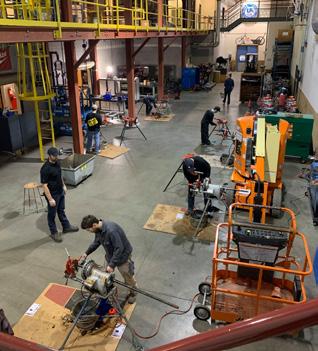



In addition to apprenticeship and journeyperson upgrade training, the UAPICBC is dedicated to providing an educational pathway for women, youth, newcomers and Indigenous Peoples.




had shifted from finding jobs for members to finding workers for jobs.
The local gained new, 5-year collectively bargained working contracts with the Construction Labour Relations Association that year, as well. The Trade Memorandum of Agreements provided a total wage-and-benefits increase of $9.85 per hour for the local’s members working in the industrial sector, and a total raise of $8.25 per hour for members working in the commercial/institutional sector.
Also in 2005, a four-year-long jurisdiction dispute with U.A. Local No. 324 of Victoria, British Columbia, was finally settled when in July of that year the Local 170 membership voted to accept a settlement negotiated between the two locals over Vancouver Island – which for the previous 105 years, Local 170 had
helped build up, including all of its many pulp mills. The resolution, reached after Local 170 had fought hard to retain its territory through legal actions at the Labour Relations Board and appeals to the U.A. international offices, gave Local 324 just the commercial/institutional sector on the island.
“It has been a difficult few years fighting for our right to retain our jurisdiction on Vancouver Island,” Business Manager Shayler later declared in his report to the Annual General Meeting on May 31, 2009. “This negotiated settlement could not have been successfully completed without the membership’s input and support throughout the entire process.”
Into the second half of the decade as strong employment continued, Local 170 and the Construction Labour Relations Association
U.A. LOCAL 170 125th Anniversary 125 U.A. LOCAL 170 125th Anniversary 125
Training at the U.A. Piping Industry College of British Columbia during the 2020s.
U.A. officials (from right) U.A. Piping Industry College of British Columbia (UAPICBC) Executive Director A.D. Al Phillips (at podium), Local 170 Business Manager Joe Shayler, U.A. General President Bill Hite, U.A. Director of Canadian Affairs John Telford and previous U.A. Canadian Director Mitch Grenier participate in “pipe-cutting”
for the grand
of the new UAPICBC on June 8, 2010.
Local 170 member Russel St. Eloi (left), standing with U.A. General President Martin Ward during an event in 1976, in addition to being the U.A.’s first-ever Director of Canadian Affairs from 1972 until his retirement in 1993, served as the local’s business manager and on its Executive and Examining Boards and was named a vice president on the U.A. General Executive Board in 1976. Initiated into Local 170 on March 29, 1943, Brother St. Eloi passed away on January 2, 2007.
ceremonies
opening


discussed ways to meet manpower requirements in the commercial and institutional industries. The local unilaterally moved in 2006 to help address the issue by hiring an additional organizer in the Lower Mainland on a temporary basis to bring in new members, especially through attracting qualified journeypersons from the non-union sector.
The local’s healthy employment continued to hold and its finances continued to strengthen into 2009 as a result of a strong job market and continued supervision of the local’s expenditures. As such, that year the local eliminated a long-time debt incurred prior to 2001 when the local borrowed against its various funds to cover a serious shortfall in its Working Dues Check-off Fund resulting from low employment and manhours.


Additionally, because the local had focused on developing initiatives and strategies to overcome down times, including its MIAP market-recovery program, and thanks to the excellent relationships it had with its contractors, Local 170 was able to be proactive in the action that it needed to take to meet the demands of the job market as the decade was coming to a close.
Gathering Momentum
With the clients of just about every major project across Canada insisting on having project agreements with labour in place for the work, Local 170 had been a willing negotiating partner for the job-specific pacts that included provisions such as no-strike/no-lockout clauses





Alfred Shead 1898 – 1899
William Blackmore 1900 – 1901
William A. Cleator 1902
William Duncan 1903
Charles E. Kiefer 1903 – 1905
John H. Leitch 1906
George Cogwill 1907 – 1910
James Cowling 1911
Fred Quinlan 1912 – 1913 <vacant>
1914 – 1917
J. Cowling 1918
Fred W. Welsh 1919 – 1921
Samuel G. Smylie 1922
John A. Hey 1923
W. Watt 1924 – 1931
<vacant> 1932 – 1933
Charlie Pritchard 1934 – 1941
Frank Carlisle 1942 – 1943
Arch Mathieson 1944 – 1945
Frank Carlisle 1946 – 1952
Norman Uphill 1953 – 1955
J. Russ St. Eloi 1956 – 1966
John L. Fisher
1967 – 1970
Leslie C. Andrew
1971 – 1976
John N. Wynne 1977 – 1984
Norman D. Farley
1985 – 1988
John. N. Wynne 1989 – 1994
Barry Clark
1995 – 1997
Jim Dougan 1998 – 2000
Joe Shayler
2001 – 2017
A.D. Al Phillips 2018 – present
Local 170 Metal Trades Division Officials
Norm Farley 1968 to 1984
Gord Finlay 1972 to 1973
Bill Farley 1975 to 1977
<vacant> 1978 – 1982
Mike Suter 1982 to 1995
Ray Callard 1985 to 1998
Senaka Malleappah 1991 – 1992
Lance Yearley 1996 – 1998
Borys Lessy 1999 – April 30, 2022
A.D. Al Phillips May 1, 2022 – present
U.A. LOCAL 170 125th Anniversary 125 U.A. LOCAL 170 125th Anniversary 125
Local 170 members (left to right) Mike Mussbacher, Torrence Vranckaert and Bradley Blades work at the Annacis Island Waste Water Treatment Plant circa 2019.




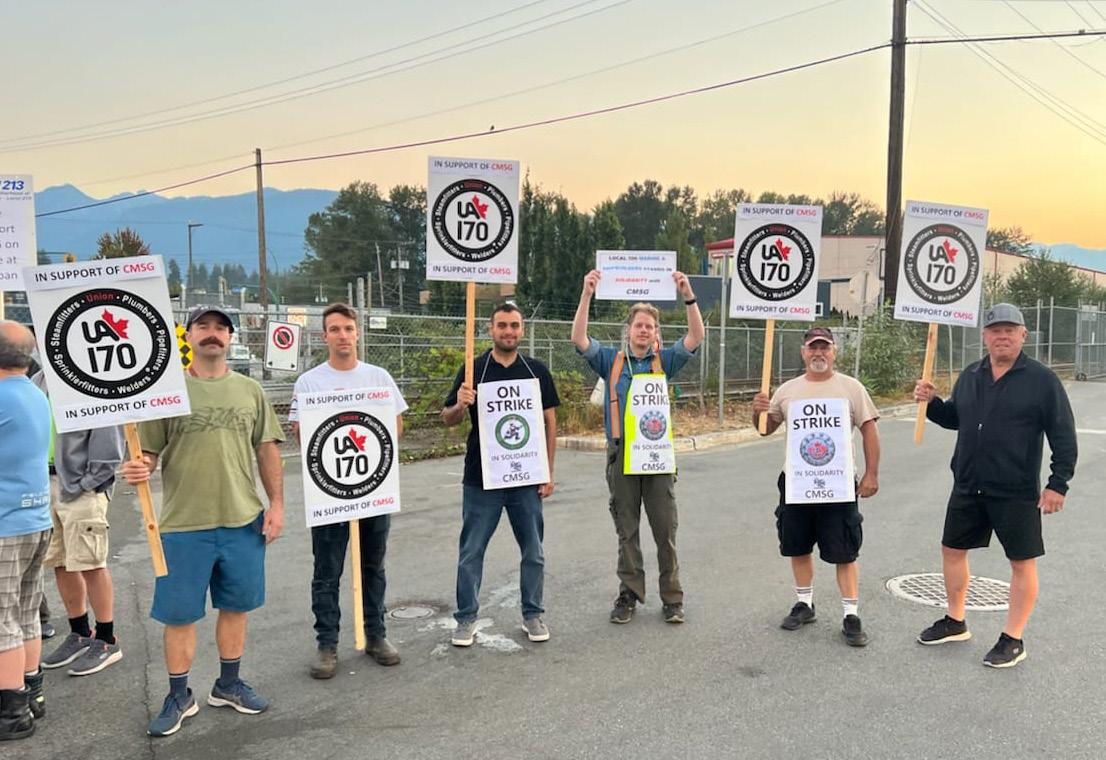
and no-work-stoppage stipulations during jurisdictional disputes between the trades.
By 2010, in fact, over the previous few years, projects secured in the industrial and pipeline sector with project agreements that employed the local’s members included the Endako Mine Project, Fort St. John Hospital, Sunset Creek Compressor Station, the Louisbourg Pipeline Saturn Project (24 kilometers of 36-inch pipe) for TransCanada and the Louisbourg Pipeline Horne River Project (72 kilometers of 36-inch pipe) for Spectra Energy.
First Female Yukon First Nations Member
In 2012, Sister Jordan Atlin, a B-level welding apprentice and citizen of the Carcross/Tagish First Nation of Yukon, became the first Yukon First Nations woman to become a member of Local 170.



That year, Local 170 members began working on the Kitimat Modernization Project, one of the larger jobs in which they were involved during the decade, with 3,600 construction workers employed at its peak. When it was completed in July 2015, the $4.8-billion upgrade to the 1950s Alcan aluminum smelter (the biggest in the world when it was built) modernized operations, reduced environmental emissions and increased output of the facility, a primary economic driver for the town of Kitimat.

The local further continued to experience significant improvement in its overall financial position into 2011, a development that had begun a decade earlier. That year, the utilization of the local’s MIAP marketrecovery program, to which members were contributing 80 cents per hour worked, created approximately 569,500 manhours of employment for them despite a continuously challenging commercial/industrial sector. With the Industrial sector busy – a trend that would continue into the coming years, Local 170 also signed 11 new contractors in 2011 through its Organizing Program.
Also that June, the local’s Joint Conference Board successfully concluded trade-level agreements for the commercial/institutional and industrial sectors. Both contracts were in place effective July 4, 2011.
Into the mid-2010s, securing commercial/institutional sector work remained difficult for the local, but its contractors continued to secure public/private projects that employed members. Those included the Kelowna, Vernon, Fort St. John and Surrey Memorial hospitals; the GTAPRCMP headquarters in Surrey; and the Life Science Centre and Centre for Brain Health at the University of British Columbia.

Brother A.D. Al Phillips was elected in 2018 as business manager and heads the local as it celebrates its 125th anniversary in 2023.
Still, much of the local’s focus throughout the second half of the 2010s and up to its 125th anniversary in 2023 remained on its employment, and particularly during that time the large amount of pipeline work and the many potential liquefied natural gas (LNG) projects in its jurisdiction.

U.A. LOCAL 170 125th Anniversary 125 U.A. LOCAL 170 125th Anniversary 125
Local 170 members show their support for the Canadian Merchant Service Guild during its strike in 2022.
Local 170 members and other building-trades craftspeople work on the 980-kilometer Transmountain Pipeline Expansion (TMX) between Edmonton and Burnaby in 2022.




First Female Instructor Has Served In Many Capacities
Local 170 Sister Anne St. Eloi was the first woman instructor to teach for the U.A. Instructor Training Program. The program educates the instructors who will teach in local union training programs.
Sister St. Eloi became a 40-year journeyperson member of Local 170 in 2022 and was an instructor for the local’s apprentice training program for many years. With a master’s degree in education/ administrative leadership from Simon Fraser University, by 2017 she was a special representative assigned to the U.A. Education and Training Department.

Additionally, she was fund administrator for Local 170 from 1999 to 2001, and before that, she was elected as a pension trustee for the local, serving in that role for three years. She also served on the National Building and Construction Trades Department Apprenticeship Committee and chaired the Provincial Gas Advisory Committee, and she was vice chair of the British Columbia Provincial Pipe Trades Advisory Committee.
Sister St. Eloi served on many other boards and committees over the years, including the B.C. Federation of Labour Women’s Rights Committee, the Provincial Safety Advisory Council, and the Gas Safety Appeal Board.
The northeastern section of British Columbia contained one of the world’s biggest shale plays, containing an estimated 449 trillion cubic feet of natural gas, and efforts to tap into the tremendous resource were advanced in 2015 with the approval from British Columbia’s legislature –putting the province, as an article in the September 28, 2015, Province newspaper declared, “on the cusp of an economic boom.”
Meanwhile, the local had several large jobs begin in 2018 and continue into 2019 that significantly increased work opportunities for its members.
With large crews employed on those projects, which included the new, $200-million Molson Coors brewery in Chilliwack, the local’s work hours increased by 25 percent that year over 2017.




POWERING To Year 125
Before the expected LNG and other substantial new jobs came to full fruition, 2019 was a busy but challenging year for Local 170. While the local’s membership worked on several large projects that included Vancouver International Airport upgrades, contract negotiations did not produce their intended results for the local in new working agreements.
The onset of the coronavirus (COVID-19) pandemic then followed in early 2020, after which it would claim the lives of more than 53,000 Canadians and 1-million Americans over the next three years. Local 170 quickly adapted to protect its members and staffers, taking measures to help stop the spread of the disease that included social distancing, canceling meetings and training, and moving many of its member services online.
“COVID-19 has turned our way of life upside down, changing most things we took for granted,” Business Manager Phillips lamented in his 2020 Local 170 Annual Report. “All these things that connect us to each other have, in an instant, become unsafe and potentially harmful to our loved ones.”


Into and throughout 2021, the pandemic continued to evolve and affect every part of the lives of Local 170 members, while British Columbia experienced devastating wildfires and historic flooding. With construction, critical services and maintenance jobs deemed essential, Local 170 members continued to work throughout the pandemic, while many workers in other industries stayed home.

U.A. LOCAL 170 125th Anniversary 125 U.A. LOCAL 170 125th Anniversary 125
Local 170 crew working on construction of the new, $200-million Molson Coors brewery in Chilliwack in 2018.
Construction of the 670-kilometer Coastal Gaslink pipeline from Dawson Creek to Kitimat, which employed Local 170 members, in 2022.


The local also lobbied for and represented the rights of its members with contractors, industry groups and government, from vaccine prioritization to sanitation on worksites and in camps, lifting of excessive camp restrictions, provision of paid sick days, alternatives to vaccine mandates, unlawful dog searches, and unfair labour practices. While the local anticipated 2022 would finally bring an end to COVID-19, it continued to keep advocating for better working conditions for all of its members.
U.A. Local 170 Elected Officers, 2021-2023
Business Manager/Financial Secretary
A.D. Al Phillips
Assistant Business Manager


Jeff Chapman
Business Agents
Mark Glazier
Leo Ciarrocchi
President Russel J. St. Eloi
Vice-President
Ed Bailey
Recording Secretary
Ryan Campagna
Treasurer
Audrey Curran
Inside Guard
Shawn Thorsteinsson
Executive Board
Susan Hickey
Peter Humski
Jim Lindsell
Jim Wheatley
Ed Bailey
Finance Committee
Jason Bulizuk
Steven Spees
John Wynne
Examining Board
Cameron Palmer
Pavel Pajger
During that time, the massive LNG Canada project to build a natural-gas pipeline from Dawson Creek to Kitimat and a liquefied-gas export facility in Kitimat began. The largest private investment job in Canada’s history, it coincided with the commencement of major pipeline projects including the Transmountain Pipeline Expansion (TMX) and Coastal Gaslink, putting scores of Local 170 and other U.A. members to work beginning in earnest in 2021 across the province as COVID-19 continued to subside.
The $6.6-billion Coastal Gaslink project would erect a 670-kilometer pipeline delivering natural gas from Dawson Creek to Kitimat with completion in 2023. At the same time, the $12.6 billion TMX project would construct a new 980-kilometer pipeline between Edmonton and Burnaby with 12 pump stations and 19 storage tanks also with completion in 2023.
With those and several other major projects in the local’s jurisdiction concurrently going and fully staffed in the second half of 2021, including St. Paul’s and Terrace hospitals, Local 170 was also seeing results of its legislative lobbying efforts, supported by its membership. For instance, the local and all organized labour welcomed the introduction of Skilled Trades Certification, Sick Pay legislation and improved WorkSafe legislation with respect to asbestos and sanitation conditions on the worksite.
A dramatic post-COVID increase in work opportunities, spearheaded by LNG Canada at Kitimat and the gas pipeline projects, kept the local’s members well-employed throughout 2022 and into 2023. What’s more, the local’s commercial sector was extremely busy, as well, with the start of many hospital projects – all of which resulted in a record number of U.A. travelers from other locals working in the


province in 2022, while overall hours worked by the local’s building-trades members increased by 41 percent over 2021.
Preparing to celebrate its 125th anniversary in 2023, the local’s members continued to experience strong employment conditions into the year after the local invested considerable time and resources in organizing in 2022. Having fully recovered from the latest challenges, Local 170 displayed its resilience and strength throughout … and its membership, diverse and widespread as it is, will continue to persevere on its shared pride well into its future.



U.A. LOCAL 170 125th Anniversary 125 U.A. LOCAL 170 125th Anniversary 125
of the three Local 170 crews of plumbers, pipefitters and steamfitters working in July 2023 on the Fort St. John’s Site C project, consisting of a dam and hydroelectric generating station on the Peace River that is one of British Columbia’s largest legacy projects for supplying clean energy to generations of its residents.
One
The liquefied-gas export facility in Kitimat under construction with Local 170 labour in 2023, part of the massive LNG Canada project – the largest single privatesector investment in Canadian history.























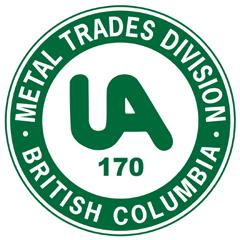




U.A. LOCAL 170 125th Anniversary 125 LOCAL 170 LOGOS THROUGHOUT THE YEARS Thank You! U.A. Local 170 sincerely appreciates the participation of all Sponsors and Advertisers in supporting our 125th Anniversary Celebration!
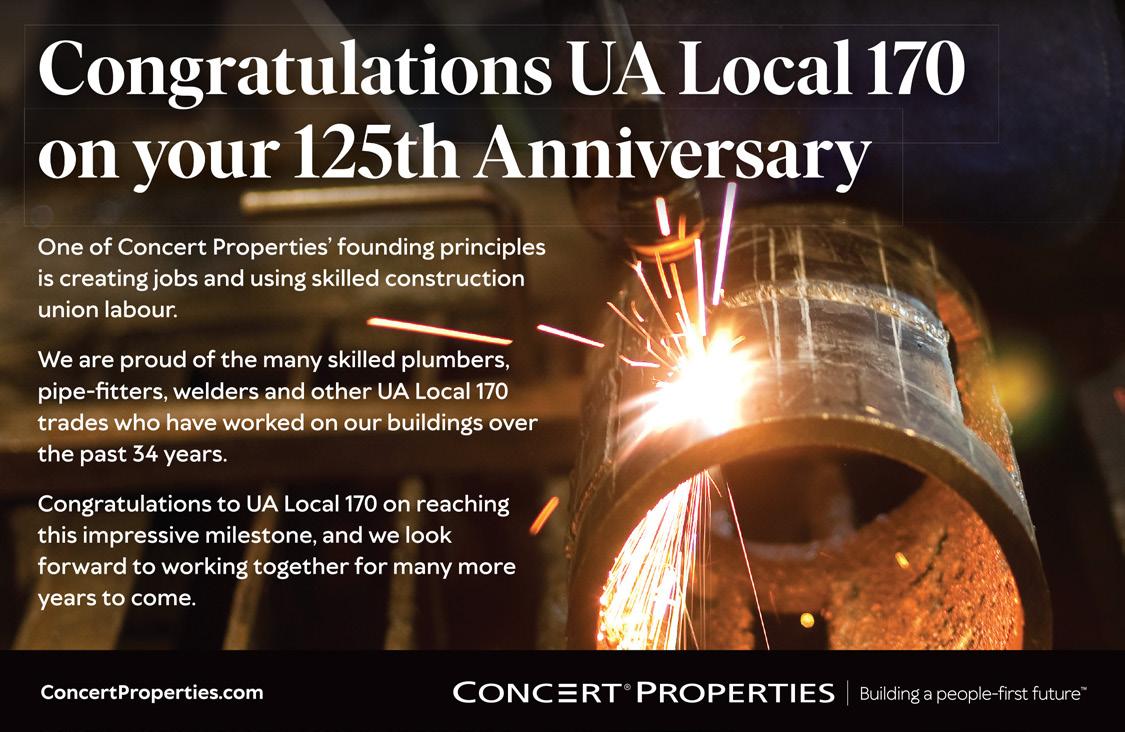



ALLABOUTGOLF SPONSOR ALLABOUTGOLF SPONSOR ALLABOUTGOLF SPONSOR ALLABOUTGOLF SPONSOR
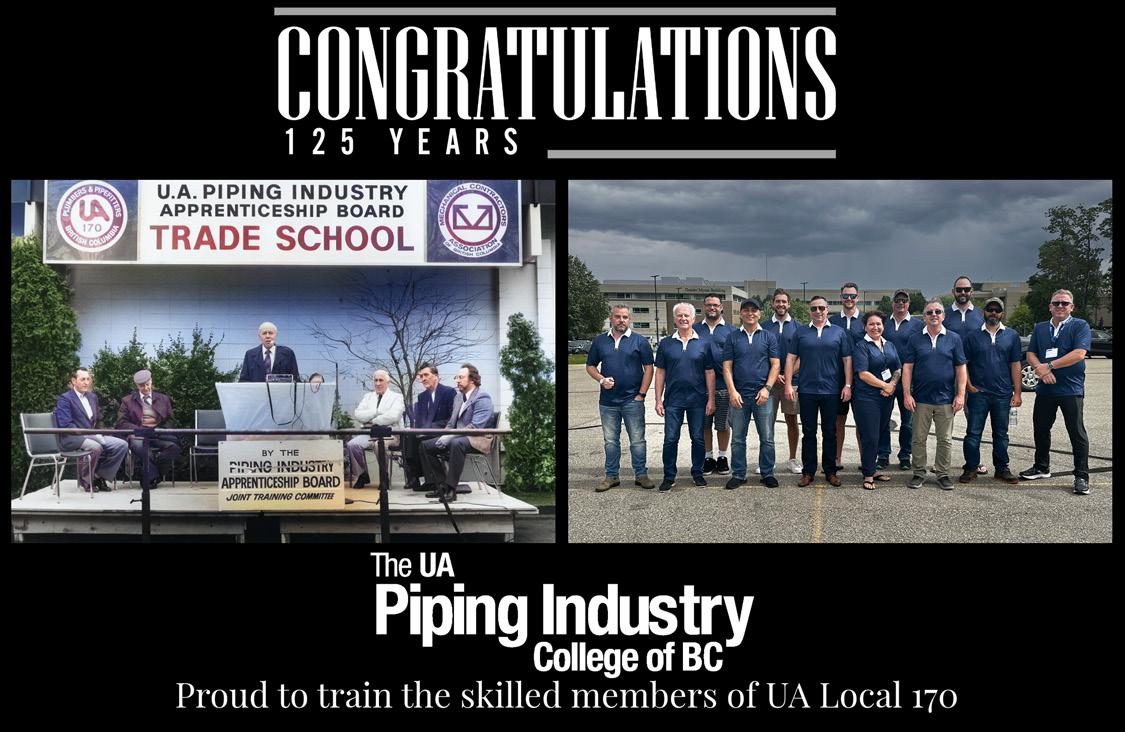


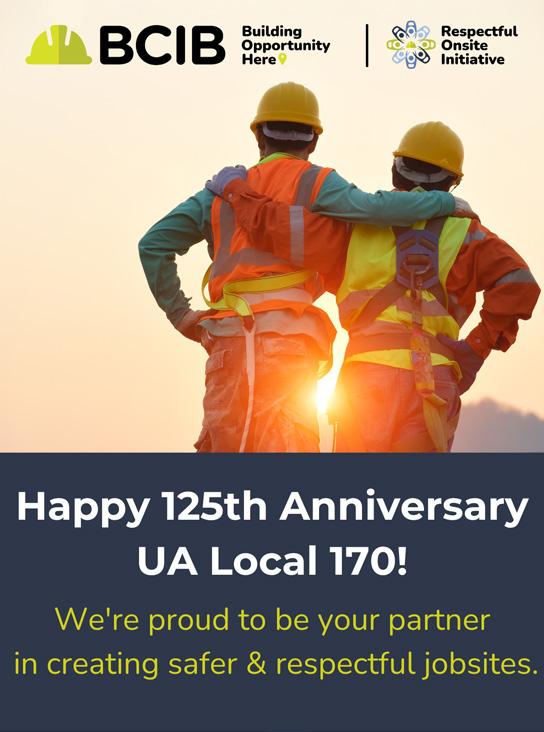

ALLABOUTGOLF SPONSOR ALLABOUTGOLF SPONSOR ALLABOUTGOLF SPONSOR CELEBRATION SPONSOR CELEBRATION SPONSOR



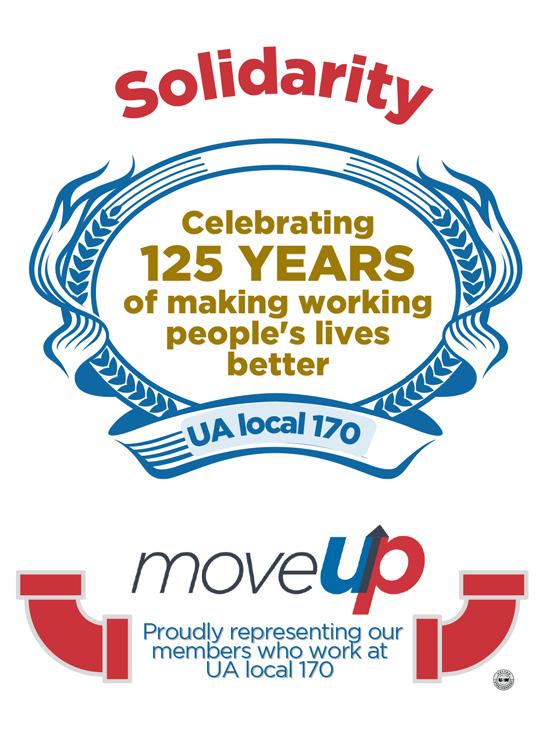




CELEBRATION SPONSOR CELEBRATION SPONSOR CELEBRATION SPONSOR CELEBRATION SPONSOR CELEBRATION SPONSOR CELEBRATION SPONSOR CELEBRATION SPONSOR CELEBRATION SPONSOR





CELEBRATION SPONSOR CELEBRATION SPONSOR CELEBRATION SPONSOR


































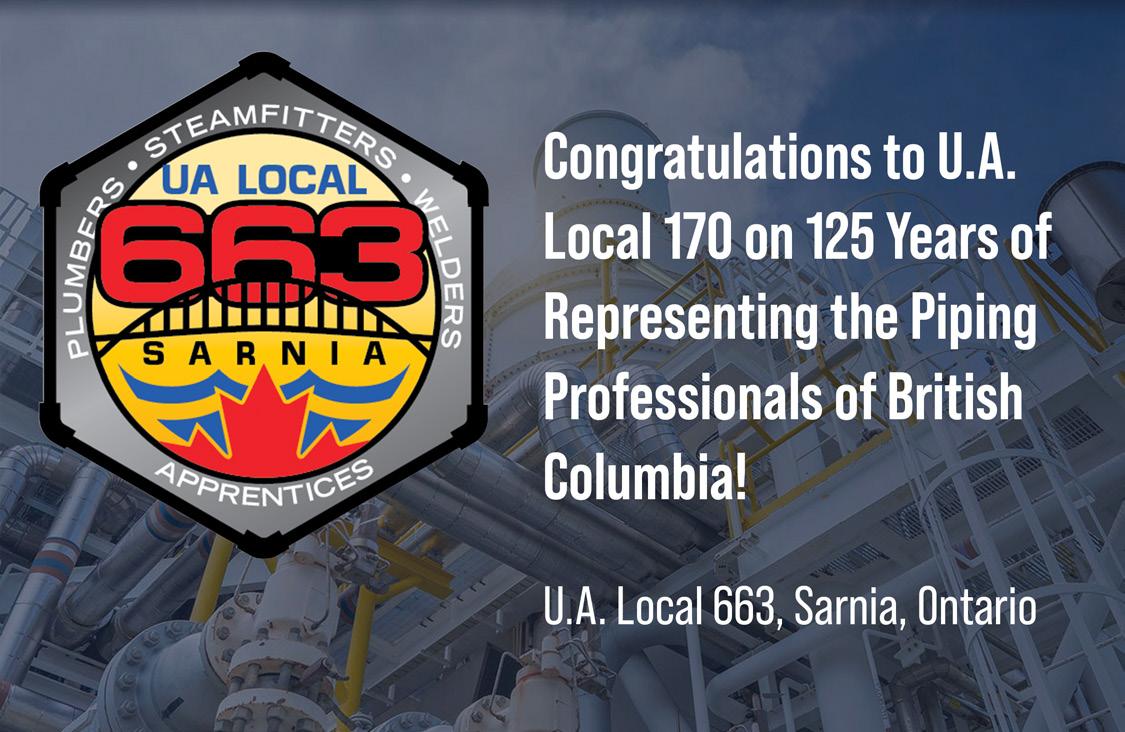


















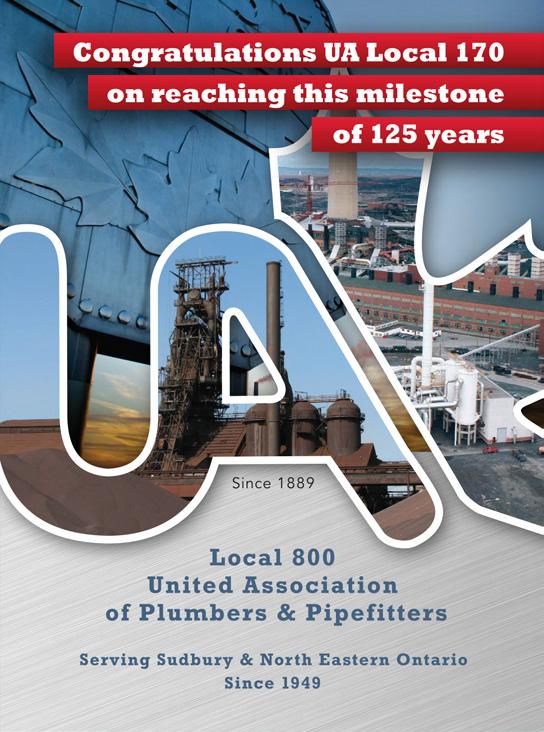





Art Direction: Andy Taucher
Layout & Design Steven Demanett
Research Assistant: Henry Waatainen
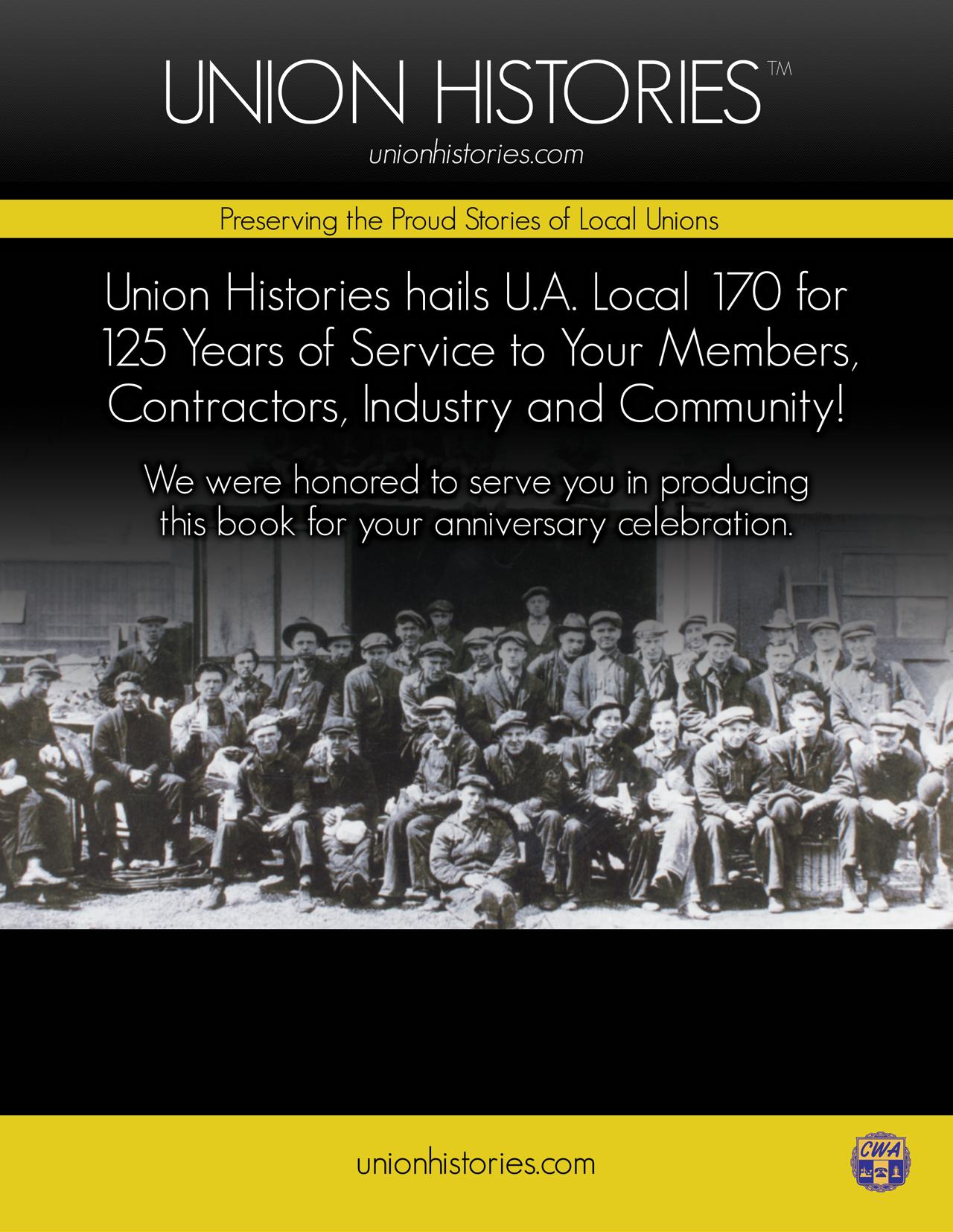
United Association Local 170 and Union Histories give special thanks to the following for their contributions to this book:
Local 170 retired member and current president Brother Russel J. L. St. Eloi Museum and Archives of North Vancouver
City of Vancouver Archives
Vancouver Public Library
Simon Fraser University U.A. International Office
 This book was proudly produced by
Head Historian: Calvin Jefferson Research Assistant & Proofreader Ann Wilkins Jefferson
This book was proudly produced by
Head Historian: Calvin Jefferson Research Assistant & Proofreader Ann Wilkins Jefferson








 David Eby, K.C. Premier of British Columbia
David Eby, K.C. Premier of British Columbia









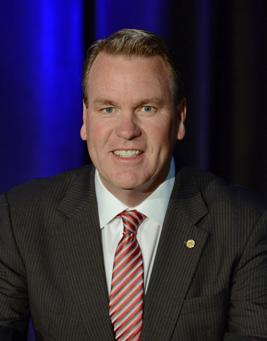
























































































































































































 This book was proudly produced by
Head Historian: Calvin Jefferson Research Assistant & Proofreader Ann Wilkins Jefferson
This book was proudly produced by
Head Historian: Calvin Jefferson Research Assistant & Proofreader Ann Wilkins Jefferson
